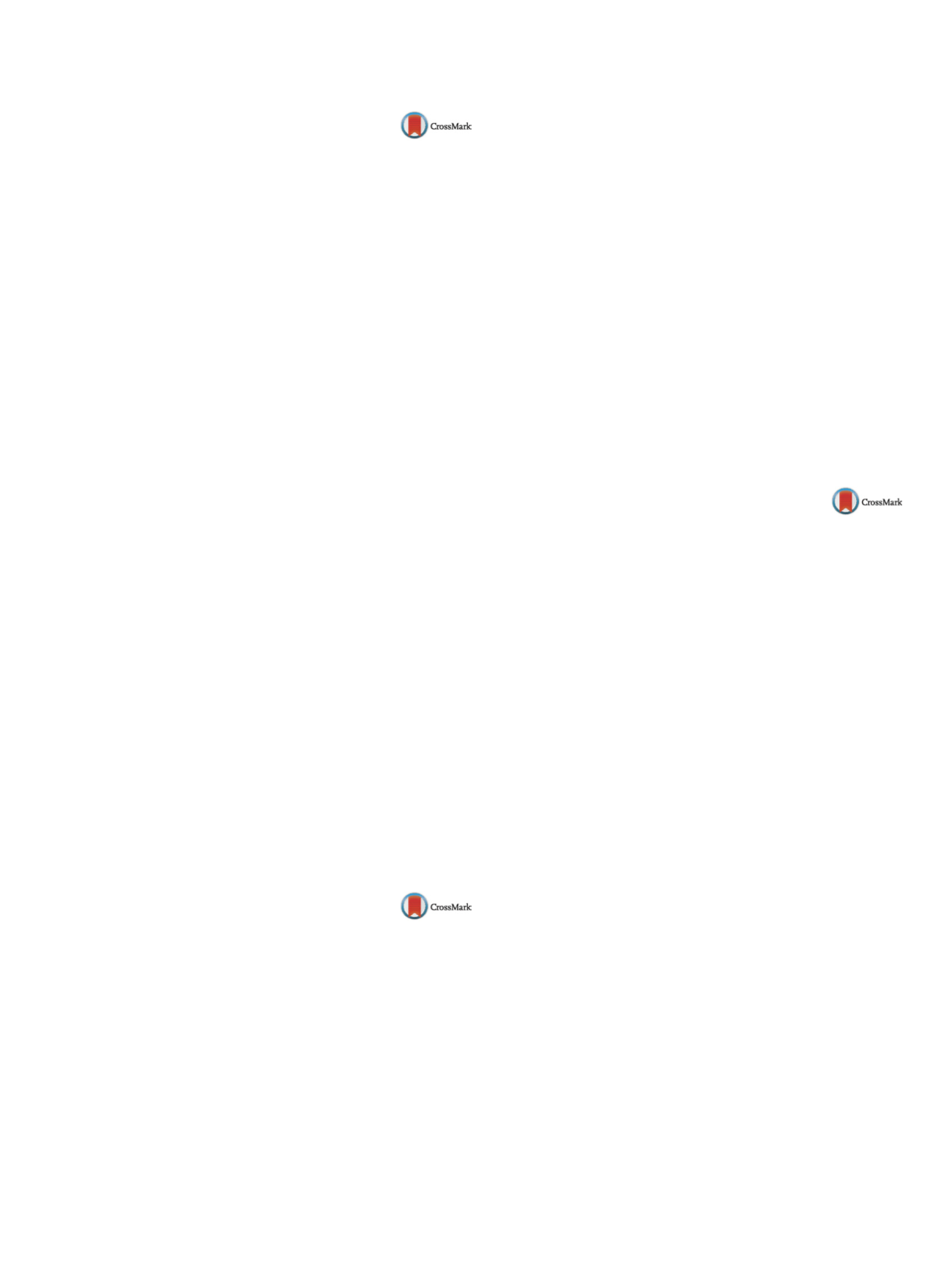

25th European Congress of Psychiatry / European Psychiatry 41S (2017) S772–S846
S809
EV1235
The predictive role of insight for the
evolution of the disease in Romanian
patients diagnosed with
schizophrenia
C.A. Crisan
1 ,∗
, S. Pintea
2, I. Miclutia
1, R. Macrea
31
UMF “Iuliu Hatiegan” Cluj-Napoca, Department of Neurosciences,
Cluj-Napoca, Romania
2
Babes-Bolyai University, Faculty of Psychology and Educational
Sciences, Clinical Psychology and Psychotherapy Department,
Cluj-Napoca, Romania
3
Psychiatry Clinic II, Adult Psychiatry, Romania
∗
Corresponding author.
Introduction
Schizophrenia is a serious disorder that influences
all life aspects of the patients. The most important goals in
schizophrenia are remission, recovery, improving psychosocial
functioning and quality of life, which can be influenced by different
factors, especially insight.
Objectives
To evaluate the awareness of illness in Romanian
patients diagnosed with schizophrenia and to determine the pre-
dictive role of insight.
Aims
This study wants to highlight the importance of the eval-
uation of insight in psychotic patients, taking into account that
awareness leads to compliance with treatment, decreased rate of
relapses and rehospitalization and a better prognosis.
Material and methods
Overall, 80 patients (44 males and 36
females) recruited from first and second psychiatric clinic Cluj-
Napoca, diagnosed according to ICD-10 and DSM-V criteria
with schizophrenia and acute psychotic disorder participated
in this study. A semi-structured interview collected demo-
graphical data. Psychotic symptoms were evaluated using
PANSS, severity of the disease using CGI and insight using
SUMD.
Results
Our results showed that the most important predictive
factors for the evolution were: level of insight (
r
=
−
0.41
P
< 0.01),
presence of family history (
r
= 0.24
P
< 0.05) and belonging to
urban areas (
r
= 0.23
P
< 0.05). The level of insight explained 16%
of variance of improving psychotic symptoms during hospitaliza-
tion.
Conclusions
The awareness of illness is one of the predictive fac-
tors for long-term schizophrenia and the best predictive model of
disease progression is composed of variables SUMD total and PANSS
total on admission.
Disclosure of interest
The authors have not supplied their decla-
ration of competing interest.
http://dx.doi.org/10.1016/j.eurpsy.2017.01.1565EV1236
Validation of the delusional ideation
inventory for the Portuguese
population
S. Pimentel
1 ,∗
, M. Cunha
2, A. Galhardo
2, M. Couto
11
Miguel Torga Institute, Clinical Psychology, Coimbra, Portugal
2
Miguel Torga Institute/CINEICC, Clinical Psychology, Coimbra,
Portugal
∗
Corresponding author.
Introduction
The dimensional approaches regard delusions as a
continuum of the daily beliefs, not being limited to the clinical pop-
ulation and it can also be found in the general population. Due
to the multifaceted conceptualization of delusions, the analysis of
the dimensions of distress, preoccupation and conviction may be
more revealing than the content of the belief itself, whereby an
evaluation that incorporates these dimensions is fundamental.
Objective
Translation, adaptation and study of the psychometric
properties of the Peters et al. delusions inventory (PDI-21) for the
Portuguese population.
Aim
Assessing themultidimensionality of the delusional ideation
in the community.
Methods
The sample consists of 249 adults from the general pop-
ulation, aged between 18 to 65. The brief symptom inventory, the
social desirability scale of the eysenck personality questionnaire
and the World Health Organization quality of life–bref were used
in this study beyond the PDI-21.
Results
The Portuguese version of the PDI-21 has shown good
psychometric properties regarding its internal consistency and
test-retest reliability. It demonstrated significant positive cor-
relations with the psychopathological symptoms and negative
associations with social desirability and with the quality of life,
confirming its divergent and convergent validity. The analysis of
the frequency of delusional ideas for the total of the sample and on
the basis of gender has revealed prevalence rates very similar to
the ones found in previous studies.
Conclusions
The Portuguese version of the PDI-21 has adequate
psychometric properties and it can be used to assess the delusional
ideation in the general population.
Disclosure of interest
The authors have not supplied their decla-
ration of competing interest.
http://dx.doi.org/10.1016/j.eurpsy.2017.01.1566EV1237
Quetiapine in treatment of first
episode schizophrenia
N. Zivkovic
∗
, G. Djokic
Clinic for psychiatric disorders “Dr Laza Lazarevic”, Belgrade, Urgent
psychiatry, Belgrade, Serbia
∗
Corresponding author.
Introduction
Although there is no cure, schizophrenia is highly
treatable disease. Successful first episode schizophrenia (FES)
treatment is crucial to minimize personal, vocational and social
deterioration. Quetiapine is atypical, second generation antipsy-
chotic, serotonin-dopamine antagonist. Quetiapine is potent
blocker of D2, 5HT2A and 5HT1A receptors.
Objective
To estimate efficacy of quetiapine in treatment of first
episode schizophrenia.
Methods
This study included 70 patients with FES diagnosed by
ICD-10 criteria, who are divided into haloperidol (H) 35 patients
and quetiapine (Q) group 35 patients. Patients were observed for
6 months in hospital and extra hospital conditions, according to
protocol which included Positive and Negative Symptom Sched-
ule Scale (PANSS) and the number of withdrawals attributed to
adverse event (AE). Control group was treated with haloperidol
5–20mg/24 h and experimental group was treated with quetiapine
400–800mg/24 h.
Results
Average pretrial PANSS scorewas 110.1 in quetiapine and
108.5 in haloperidol group. Average PANSS score after 180 days was
50.6 in Q and 60.4 in H group. There is no statistical difference in
pretrial scores between groups for PANSS score (
P
= 0.647). There
is significant statistical difference in PANSS score reduction after
180 days in both groups (
P
< 0.001). There is significant statistical
difference in PANSS score reduction between Q and H group after
180 days (
P
< 0.001). Overall, 8.6% AEs occurred in Q, and 25.8% in
H group.
Conclusion
Quetiapine has shown better efficacy in treatment of
FES comparing to haloperidol, with statistically significant lower
adverse effects rate.
Disclosure of interest
The authors have not supplied their decla-
ration of competing interest.
http://dx.doi.org/10.1016/j.eurpsy.2017.01.1567

















